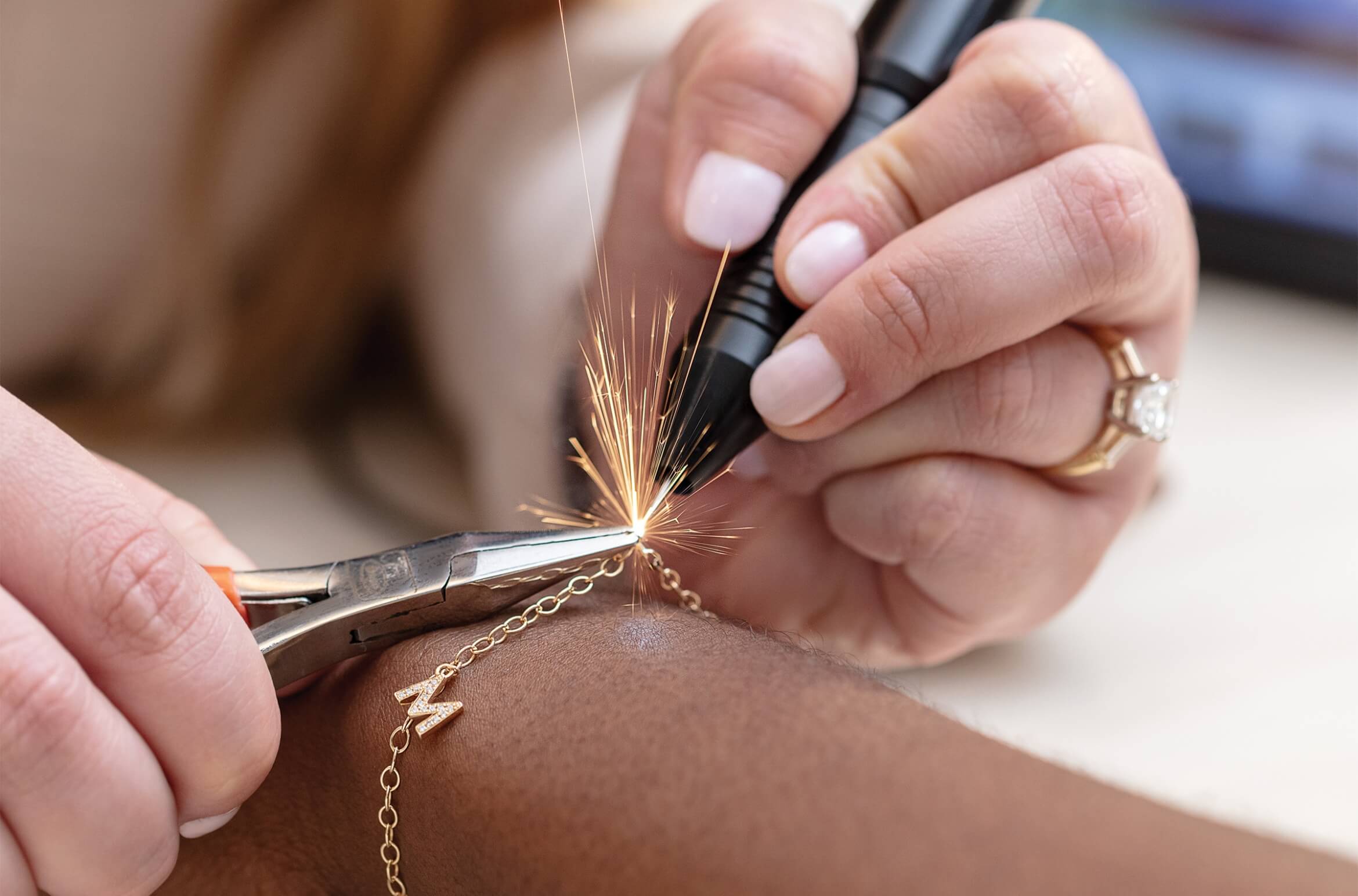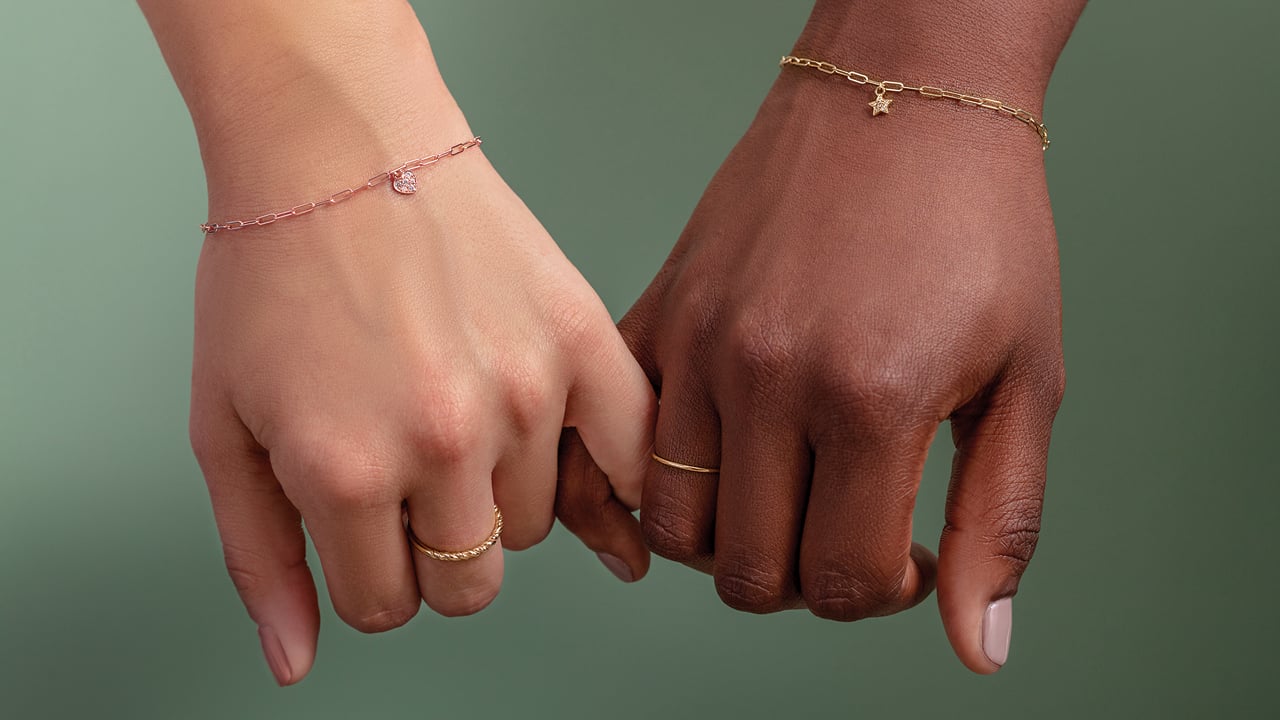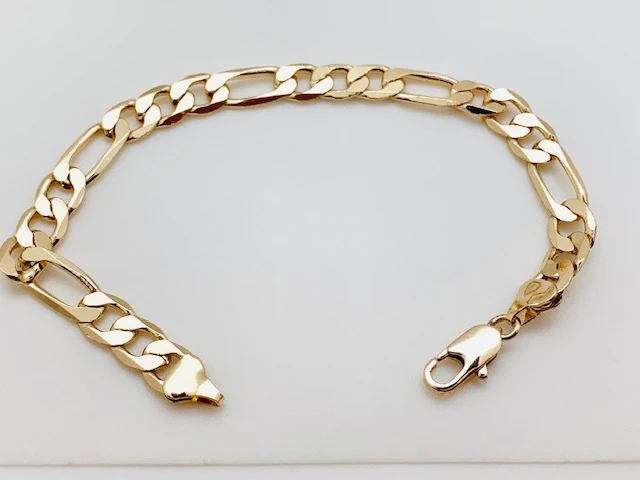Permanent Jewelry: The Definitive Guide to Claspless Luxury
Permanent jewelry is custom-fit jewelry welded shut directly on the body. Instead of using a clasp, a fine chain is fused around the wrist, ankle, finger, or neck. The seamless closure ensures continuous wear until removal with a cutter.

How Permanent Jewelry Is Applied:
To apply permanent jewelry, jewelers measure the exact length of chain. The ends are aligned and joined using a pulse arc welder. The machine produces a spark that fuses the metal in less than a second. The skin is never touched.
The procedure takes under 20 minutes. Customers choose chain type, metal, and add-on charms. The welding point is nearly invisible once fused, making the piece appear flawless and uninterrupted.
Metals and Materials Used:
| Material | Durability | Tarnish Resistance | Typical Cost Range | Notes |
|---|---|---|---|---|
| 14k Gold | High | Excellent | $100–$500+ | Most popular choice |
| 18k Gold | Medium | Excellent | $200–$800+ | Softer alloy, luxury option |
| Sterling Silver | Medium | Low | $50–$150 | Affordable, prone to tarnish |
| Gold-Filled | Low to Medium | Moderate | $75–$200 | Budget-friendly alternative |
| Platinum | Very High | Excellent | $300–$1,000+ | Rare but hypoallergenic |
Solid gold is favored for longevity. Silver and gold-filled pieces are offered by budget-focused studios.
Why People Choose Permanent Jewelry:
-
Celebrate bonds: Friends or couples weld matching bracelets.
-
Mark milestones: Birthdays, weddings, and anniversaries inspire permanent keepsakes.
-
Reduce hassle: Claspless chains remove the need for daily fastening.
-
Create minimalism: Simple welded pieces support everyday wear.
-
Personalize fashion: Charms, birthstones, or initials enhance uniqueness.
Advantages of Permanent Jewelry:
-
Ensure convenience with jewelry that never requires fastening.
-
Ensure durability by using metals designed for constant wear.
-
Ensure personalization with chain styles and gemstone charms.
-
Ensure symbolism by capturing memories in a lasting accessory.
-
Ensure low maintenance compared with costume jewelry.
Disadvantages of Permanent Jewelry:
-
Limit flexibility since jewelry cannot be swapped daily.
-
Limit cost savings because solid gold chains are expensive.
-
Limit removal as cutters are required.
-
Limit suitability for certain jobs or sports.
-
Limit comfort for those with sensitive skin.
Care and Maintenance Practices:
To care for permanent jewelry, clean chains with mild soap and warm water. Dry gently with a soft cloth. Avoid exposure to harsh chemicals or abrasive cleaners. Silver tarnishes faster and benefits from regular polishing with a specialized cloth.
Safety and Considerations:
Permanent jewelry is safe when welded by professionals. Jewelers shield sparks with protective barriers. The process is painless. Nickel-free alloys reduce allergic reactions. Jewelry may need removal for MRI scans, surgery, or sports activities requiring metal-free zones.
Situations Where Removal Is Necessary:
-
Undergoing medical imaging such as MRI.
-
Participating in contact sports with jewelry restrictions.
-
Working in fields requiring metal-free policies.
-
Experiencing skin irritation due to metal sensitivity.
How Permanent Jewelry Differs from Traditional Jewelry:
Permanent jewelry eliminates clasps. Traditional jewelry allows removal and style rotation. Permanent jewelry suits minimalists who want daily wear. Traditional jewelry suits those who prefer variety. Many wear both, combining welded chains with removable statement pieces.
Global Growth of the Trend:
Permanent jewelry spread from New York boutiques to global fashion hubs. Studios in London, Paris, Tokyo, and Toronto now offer welding appointments. Social platforms such as TikTok and Instagram accelerated adoption. Consumers value both the accessory and the bonding experience.
Table of Cost Ranges by Piece Type:
| Piece Type | Average Price (14k Gold) | Lower Range (Silver) | Higher Range (Luxury) |
|---|---|---|---|
| Bracelet | $100–$500 | $50–$150 | $600–$1,000 |
| Anklet | $150–$600 | $80–$200 | $700–$1,200 |
| Necklace | $300–$1,000 | $120–$300 | $1,200–$2,000 |
| Ring | $60–$200 | $40–$100 | $250–$600 |
Checklist Before Choosing a Studio:
-
Verify jeweler uses professional welding equipment.
-
Verify metals offered are solid and nickel-free.
-
Verify studio policies for repairs and re-welding.
-
Verify chain samples and durability.
-
Verify reviews and client testimonials.
FAQs About Permanent Jewelry:
Q1. Does permanent jewelry hurt during welding?
Permanent jewelry does not hurt. Welders never touch skin. The process produces a brief spark only.
Q2. Can permanent jewelry break under stress?
Permanent jewelry can break if chains snag. Thin chains are more fragile. Jewelers usually re-weld them.
Q3. Does permanent jewelry tarnish over time?
Permanent jewelry made from solid 14k or 18k gold does not tarnish. Sterling silver tarnishes faster and requires polishing.
Q4. Is permanent jewelry safe during travel?
Permanent jewelry made from gold or silver passes airport scanners. Security officers may inspect it.
Q5. Can children get permanent jewelry?
Most studios require clients to be over 14. Minors often need parental consent.
Q6. How long does permanent jewelry last?
Permanent jewelry lasts as long as the chain remains intact. Solid gold pieces often last years with proper care.
Q7. Can permanent jewelry be reused after removal?
Yes, jewelers can re-weld the same chain if it is not damaged.
Q8. Does permanent jewelry cause skin allergies?
Permanent jewelry made from nickel-free gold or platinum is hypoallergenic. Sensitive clients avoid low-quality alloys.
Learn More: Webfreen.com Fashion: The Ultimate Guide to Style, Sustainability, and Smart Shopping
Conclusion:
Permanent jewelry is welded jewelry designed for constant wear. It eliminates clasps, simplifies styling, and symbolizes personal connections. Consumers choose between metals, chain styles, and charms to create meaningful keepsakes. The trend continues to expand worldwide as more studios adopt the practice.







